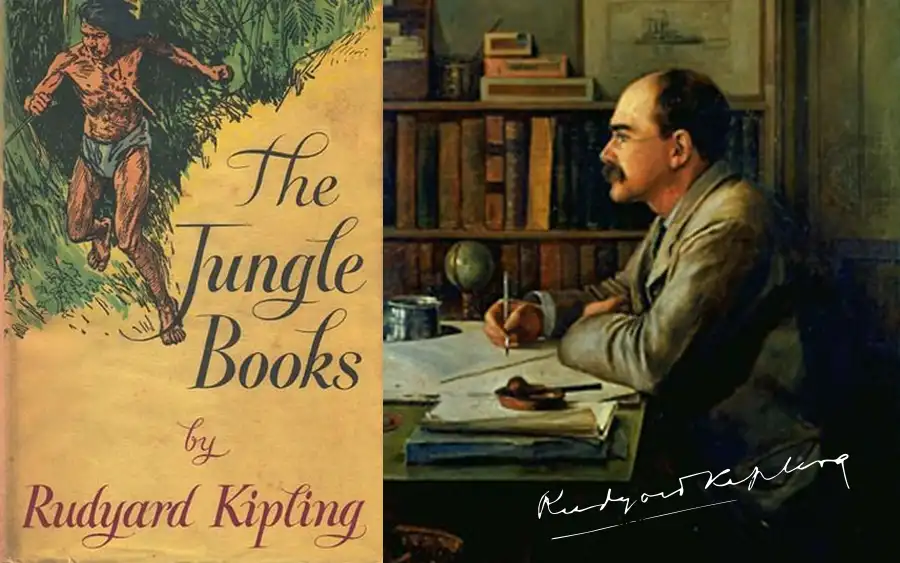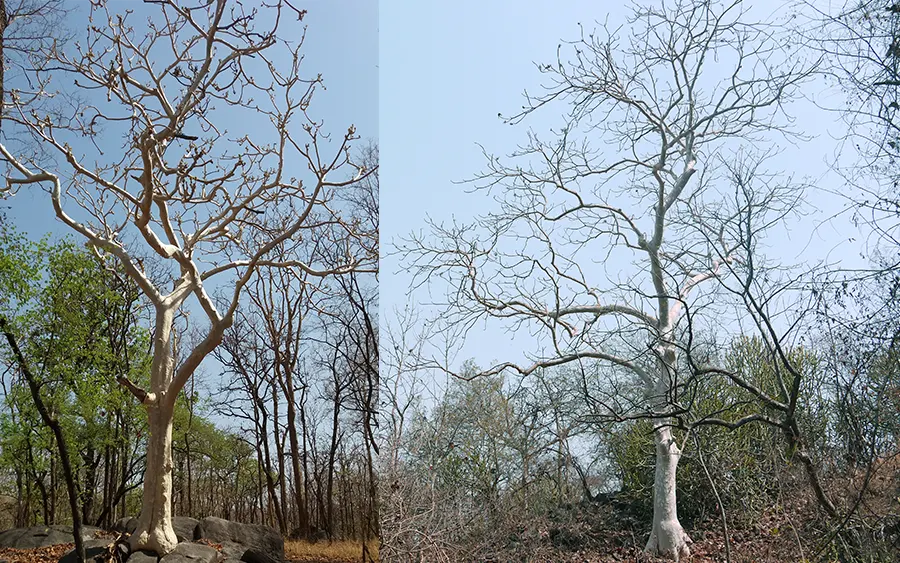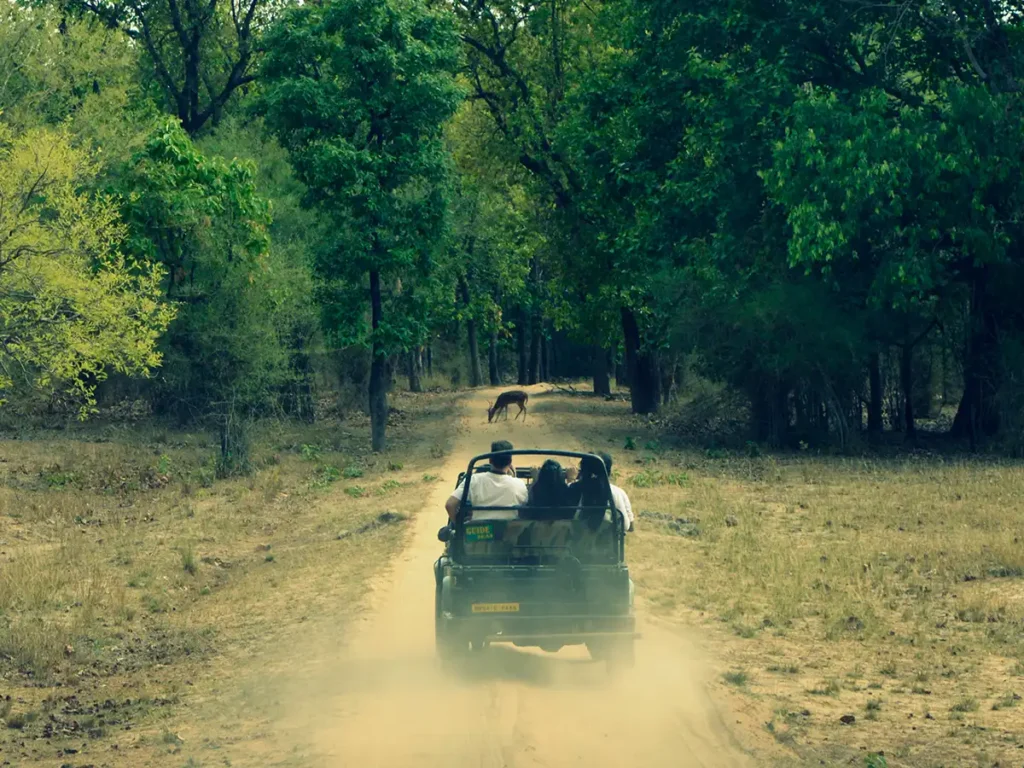Introduction
Nestled in the heart of India, straddling the borders of Madhya Pradesh and Maharashtra, Pench National Park stands as a testament to nature’s grandeur and cultural heritage. The park derives its name from the meandering Pench River, which splits the reserve into two distinct halves, creating a lifeline that sustains its diverse ecosystem. Spread across 757 square kilometers of rich deciduous forests, this pristine wilderness gained worldwide recognition as the setting that inspired Rudyard Kipling’s timeless classic, “The Jungle Book.” The undulating terrain, dotted with hills and valleys, creates a mesmerizing landscape that has captivated visitors for generations.
Historical Evolution
The historical journey of Pench is as fascinating as its natural beauty. Long before it gained official protection, these forests were home to indigenous communities who lived in harmony with nature, following traditional forest management practices that helped preserve its ecological balance. The formal conservation story began in 1977 when the area was declared a sanctuary, recognizing its crucial role in preserving Central India’s wildlife. The park’s significance was further acknowledged in 1983 when it was elevated to the status of a National Park.
However, the most significant milestone came in 1992 when Pench was brought under Project Tiger, India’s flagship conservation program, marking a new chapter in its conservation journey. This progression from a community-managed forest to a tiger reserve reflects the evolving approach to wildlife conservation in India.
Cultural Heritage
The cultural tapestry of Pench is intricately woven with threads of literature, tribal heritage, and ancient wisdom. While Rudyard Kipling’s The Jungle Book brought international attention to these forests, the true cultural richness lies in its indigenous inhabitants.

The Gond and Baiga tribes, who have called these forests home for generations, possess an intricate understanding of the ecosystem that goes beyond modern scientific knowledge. Their traditional practices, deeply rooted in sustainability, have played a crucial role in preserving the forest’s biodiversity. Sacred groves, ancient hunting rituals transformed into conservation practices, and age-old stories of man-animal coexistence form the cornerstone of Pench’s cultural landscape.
These tribes maintain their distinctive customs while adapting to modern conservation needs, creating a unique blend of traditional wisdom and contemporary forest management strategies. The park’s cultural significance extends beyond its boundaries, influencing local art, craft, and folklore, making it not just a wildlife sanctuary but a living museum of Central India’s rich cultural heritage.
Natural Heritage
Pench National Park’s ecosystem is a masterpiece of natural diversity, dominated by magnificent teak forests that paint the landscape in varying shades of green. The park’s flora is a complex tapestry where South Indian Mahua trees stand tall alongside the mystical Indian Ghost Tree, locally known as ‘Kullu,’ which glows eerily in moonlight. Black Plum trees dot the forest floor, their fruits serving as essential food sources for numerous species.

Ghost Tree (Kullu) @ Pench National Park
This vegetative richness supports an equally diverse fauna, with the Bengal Tiger at the apex of the food chain. The park has become a symbol of successful tiger conservation, with its population showing steady growth over the years. Leopards prowl these forests alongside packs of wild dogs (Dholes), showcasing nature’s perfect predator-prey balance. The park’s grasslands support large herds of Gaur (Indian Bison) and Spotted Deer, their presence ensuring the survival of the magnificent big cats.
Conservation Success Stories
The conservation narrative of Pench is a testament to what dedicated wildlife management and community participation can achieve. Over the decades, the park has witnessed a remarkable increase in its tiger population, making it one of India’s most successful tiger reserves. This success stems from a multi-faceted approach combining rigorous anti-poaching measures with innovative community-based conservation initiatives.
The park management has successfully implemented a comprehensive fire management system, crucial for protecting the dry deciduous forest ecosystem. Local communities, once considered a challenge to conservation, have become its strongest advocates through various sustainable livelihood programs. The formation of eco-development committees has created a bridge between forest authorities and villagers, leading to reduced human-wildlife conflict and increased support for conservation efforts.
Tourism Development
The evolution of tourism in Pench presents a model of sustainable eco-tourism development. The park has strategically developed its tourism infrastructure while maintaining the delicate balance of conservation. Well-planned safari routes traverse through different vegetation types, offering visitors varied wildlife experiences without disturbing the natural habitat.
The tourism season, extending from October to April, has been carefully chosen to coincide with the best wildlife viewing opportunities while avoiding the challenging monsoon period. The park has designated specific zones for tourism activities, ensuring that critical wildlife habitats remain undisturbed.
Photography enthusiasts find particular joy in the park’s open meadows and water bodies, which provide excellent opportunities for capturing wildlife in their natural setting. The park administration has also developed various interpretation centers and nature trails, enhancing the educational value of visits while managing tourist impact on the ecosystem.
Challenges and Future
Pench National Park faces a complex web of challenges as it strides into the future. Human-wildlife conflict remains a persistent concern, particularly in buffer zones where villages border the forest. The expanding human settlements and infrastructure development around the park have led to habitat fragmentation, creating isolated wildlife corridors that need urgent protection.
Climate change poses a new threat, affecting rainfall patterns and vegetation dynamics, which could potentially alter the park’s delicate ecosystem. However, the park administration is proactively addressing these challenges through innovative solutions. Future conservation plans include strengthening wildlife corridors, implementing advanced monitoring systems, and developing climate adaptation strategies. The focus is increasingly shifting towards creating a model of conservation that balances ecological preservation with sustainable development, ensuring both wildlife and local communities thrive.
Practical Information
Accessing Pench National Park has been made convenient while maintaining its wilderness charm. The nearest airports at Nagpur (Maharashtra) and Jabalpur (Madhya Pradesh) connect the park to major Indian cities, while a network of well-maintained roads leads visitors to various park entrances. Accommodation options cater to diverse preferences and budgets, ranging from luxury wildlife resorts to comfortable forest rest houses.

Safari @ Pench National Park
Safari bookings follow a streamlined online system, though advance reservations are recommended, especially during peak season (October to April). Morning safaris typically start at sunrise, offering the best wildlife sighting opportunities, while evening safaris capture the forest’s magical transition at dusk. Photography enthusiasts should carry appropriate gear, including zoom lenses, as the park offers excellent opportunities for wildlife photography. The park’s naturalists and guides, many from local communities, provide invaluable insights into the forest’s ecology and wildlife behavior.
Visitor Impact Stories
The true essence of Pench comes alive through the experiences of its visitors and the dedicated individuals who protect it. Countless wildlife enthusiasts have witnessed remarkable moments – from observing a tigress teaching her cubs to hunt, to watching dholes coordinate their hunting strategies. Conservation volunteers share transformative experiences of working with local communities and understanding the complexities of forest management.
The park’s guides, many who grew up in nearby villages, offer unique perspectives on the changing relationship between the forest and its human neighbors. Their stories of tracking tigers through pugmarks, identifying bird calls, and understanding animal behavior patterns add depth to every visitor’s experience. Tourist testimonials frequently highlight not just wildlife sightings but also the profound impact of experiencing true wilderness and understanding the importance of conservation efforts.
In Conclusion
Pench National Park stands as a shining example of successful conservation where wilderness, wildlife, and human communities coexist in delicate harmony. From its humble beginnings as a forest sanctuary to its current status as a premier tiger reserve, Pench’s journey reflects humanity’s evolving relationship with nature.The park not only safeguards critical wildlife populations but also preserves ancient cultural traditions and ecological knowledge.
As climate change and development pressures mount, Pench’s experience offers valuable lessons in adaptive conservation management. The park’s future lies in continuing this balanced approach – protecting its biodiversity while ensuring sustainable benefits for local communities. For visitors, Pench offers more than just wildlife sightings; it provides an opportunity to connect with nature, understand conservation challenges, and become part of the solution. As we look ahead, the park’s success will depend on the collective commitment of authorities, local communities, and conscious visitors in preserving this pristine wilderness for future generations.
This stunning natural heritage reminds us that conservation is not just about protecting wildlife; it’s about maintaining the delicate web of life that sustains us all. Every visit to Pench is an opportunity to contribute to this noble cause, making each of us guardians of this remarkable wilderness.






